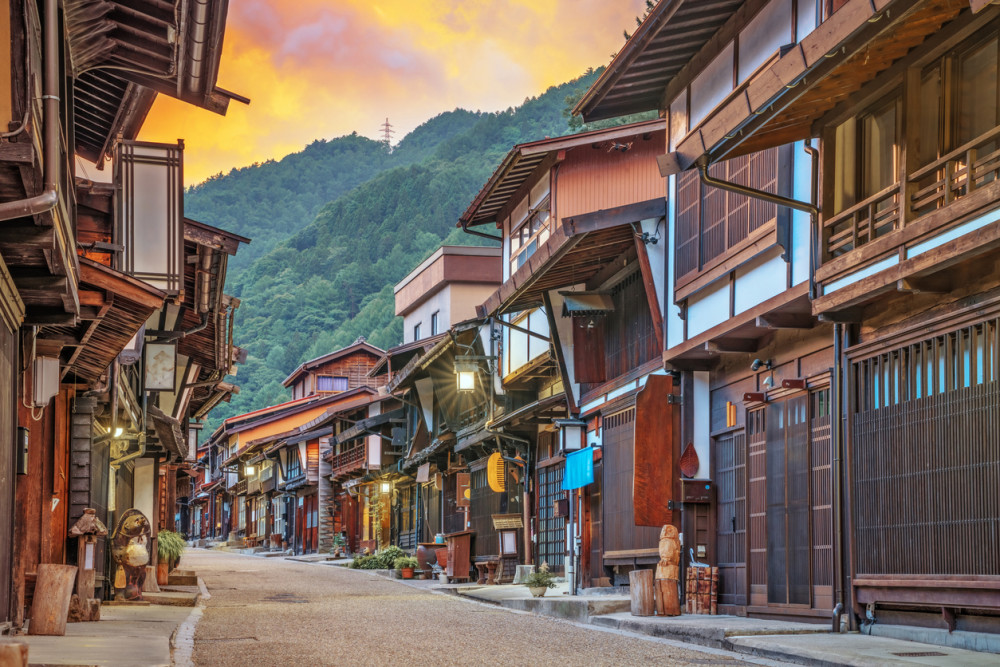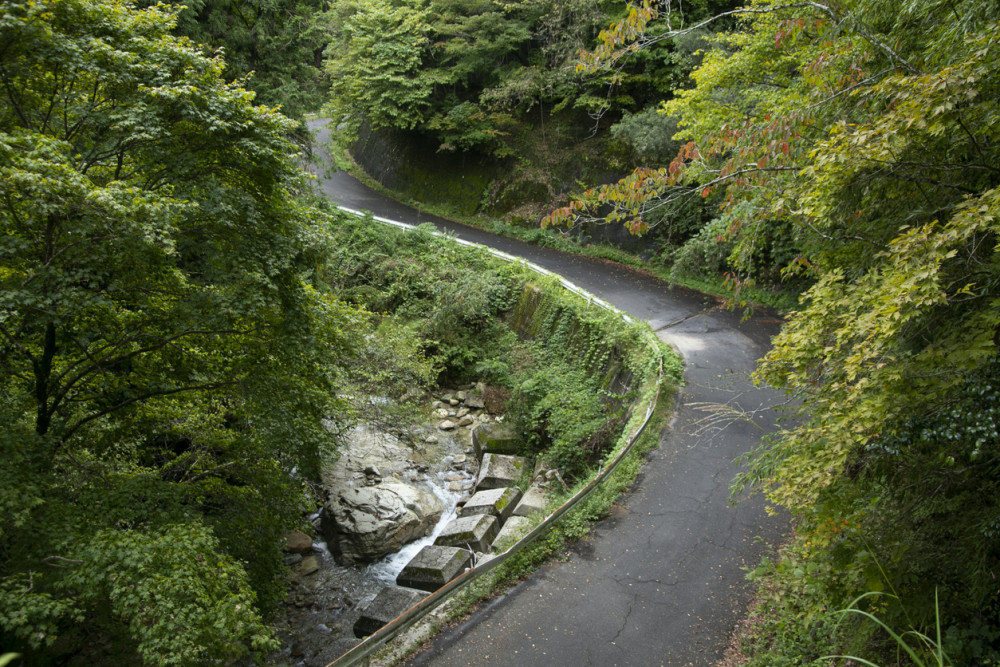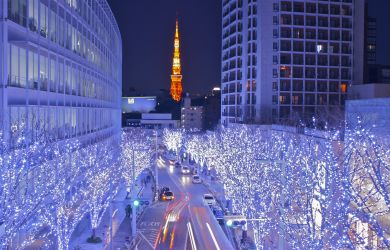
August 27, 2024
Kiso Valley: Walk in the Woods
Step back in time with a leisurely hike
By Jessie Carbutt and Mary King
“One tree, one head. One branch, one arm,” an elderly woman explains to me as I look at a drawing of a man. He is kneeling with his head down in front of his wife and children, awaiting the fatal blow of the executioner’s sword. The man’s crime? He cut down a tree in the thick forests of Kiso Valley.
The sketch, one of many on display at the local Museum in Tsumago town, depicts the harsher realities of a bygone era in this picturesque area of Nagano Prefecture. A valley surrounded by rushing cascades and Japan’s Central and North Alps, it’s also home to lush forests long treasured by the nation’s rulers.
The Forest Wood of Kiso Valley
“The castles of Edo and Nagoya were built using wood from the Kiso forests. The trees here have never belonged to us and probably never will,” the woman elaborates.
“The ‘Five Kiso Trees’ are like jewels. To take their timber without permission has, over the centuries, carried various penalties-death, the loss of a limb, or imprisonment.”
I view another sketch of a man, with arms bound behind his back, being led shamefully through town on horseback. “The trees belong to everybody else except the people of the Kiso Valley. The shogun, the emperor and now the government owned it. We still live in hope that one day they will be ours.”

Kiso Valley‘s Highway History
When Tokugawa Ieyasu (1543-1616) built five highways to link his capital of Edo (now Tokyo) with the rest of the nation, he knew the value of the Kiso Valley forests. Here, the 500km Nakasendo highway twists and turns through the verdant gap. It curves west after Magome before merging with the great Tokaido Highway at Kusatsu near Lake Biwa and finally reaching Kyoto.
In the past, people thought the huge hinoki and sawara cypresses, koyamaki (umbrella pine), asuhi (hiba arborvitae) and nezuko (Japanese arborvitae) were of superior quality. To this day, Japan’s most venerated Shinto shrine, Ise, is rebuilt every 20 years with Kiso timber.
Along each highway, the Tokugawa Shogunate established post towns about a day’s walk apart where travelers and their horses could rest. Eleven of the 69 post towns of the Nakasendo highway were on the Kisoji, or Kiso Road. This is a stretch that hugs the Kiso River and plunges through dense forest. With its sharp rises and bends, it took Edo period (1603-1867) wayfarers some three days to cross.
Nowadays, motorists can drive from one end of the Kiso Road to the other in a few hours. The best way, however, to savor the ambiance of this great historical road is to put on some sturdy walking shoes. Hike the stretch between Tsumago and Magome and breathe in the fragrant forest air.
The Hiking Route
The hike, which takes a leisurely three hours, leads you through small hamlets of wooden houses bringing a glimpse of true Japanese rural life. The road winds past fields of rice and vegetables, through thick forest and along pathways offering stunning mountain-range views.
You can find evidence of Edo-era journeys, like the ichi-ri-zuka (milestones), about every four kilometers. The Kotoku-ji temple dates back to the 1500s and features singing floorboards. It stands as one of the many historical sites that dot the landscape.
The site of the former Tsumago Castle offers a panoramic view of its namesake town. In addition, Otsumago maintains several preserved houses and the checkpoint ruins known as Ichikoku-tochi-shirakiaratame-bansho-ato. From 1749 to 1869, officials controlled the removal of timber here, highlighting the significance of the five local timber species.

The Most Historical Areas
Of the 11 post towns situated along this strip of the 550 km-long Nakasendo, Tsumago and Magome are the most well-preserved. The former is less touristy, and an overnight stay in a minshuku or ryokan offers the opportunity to stroll the streets after dusk. Small outdoor lamps gently illuminate the Edo-era wooden houses and shop fronts.
In the daytime too, the Terashita no Machi (lit, “town below the temple”), a row of traditional wooden buildings in the heart of the town, also brims with the romance of a bygone era.
Historical Museum Highlights
Buildings of particular interest to history buffs include the Okuya, also known as the Waki-honjin (the house of a local influential family that was used to accommodate guests of high standing).
The Tsumago-juku honjin gives you an idea of what life was like for the host family and daimyo to live under the same roof. The lower level of the house was used by the hosts and the upper level was reserved for the daimyo.
The Okuya, home to the Hayashi family, is open to the public as a folk museum. Here, you view the splendor of this magnificent house and various historical documents about the area.
This includes materials about Emperor Meiji, who stopped by for tea in 1880. It also shares the story of Princess Kazu (1846-1877), the sister of Emperor Komei (1831-1867). She traveled the Nakasendo to Edo in 1861. Forced to marry the shogun Iemochi in 1862, the bride’s sacrifice failed to prevent the revolution that restored imperial power.
Magome also has old-style houses, inns, and souvenir shops. The Eisho-ji temple that sits on a small hill, and the Toson Memorial Hall. It is dedicated to famed author Toson Shimazaki (1872-1943).
Shimazaki not only spent most of his childhood here but also chose the Kiso Valley as the theme for many of his works, including his most noted novel “Yoake-mae (Before the Dawn).”
History buffs with a penchant for ambling can get a double dose of nature and culture in the Kiso Valley.
Getting to Kiso Valley
From JR Tokyo Station take the Hikari Shinkansen to Nagoya and change to the JR Chuo Line to reach Magome (Nakatsugawa Station) or Tsumago (Nagiso Station). From Nagiso Station, you can either catch a bus to Tsumago or walk to the town in 1 hr 30 min. For Magome, buses leave hourly from outside Nakatsugawa station. There is also a bus service between Magome and Tsumago. This drops you off at the start of the hike from the Magome-koge pass.
If you love Nagano, check out our Chubu Guides.
[Originally published on metropolis.co.jp on May 29, 2003 by Mary King, edited August 25, 2024 by Jessie Carbutt for metropolisjapan.com]







